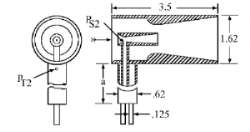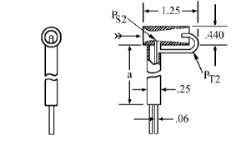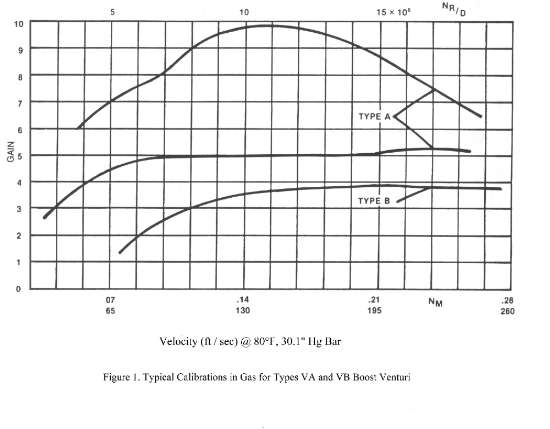BOOST VENTURI PROBES
Factors in Boost Venturi Calibration


VA Style
Boost Venturi probes can be used with either liquids or gasses. With liquids the gain ration is more constant as it depends only on Reynolds Numbers (Nr = VpD/u = velocity x density x diameter / viscosity). With gases, it depends on both Reynolds Number and Mach Number (NM = V/a = velocity / speed of sound). The effect of friction causes the gain to become smaller as the Reynolds Number becomes smaller, similar to the drop in flow coefficient of nozzles at Reynolds Numbers.
VB Style
The effects of compressibility cause the gain to become smaller as the Mach Number becomes larger. This can be seen by noting that with increasing velocity and M1 approaching the probe, PT1-PS1 would increase, but PT2-PS2 at the throat would approach a limit as choking was approached. With probes designed for high gain, i.e. a large increase in velocity at the throat, greater compressibility effects are observed at lower approach velocities than with probes designed for less gain. Typical variations are shown in Fig. 1.

